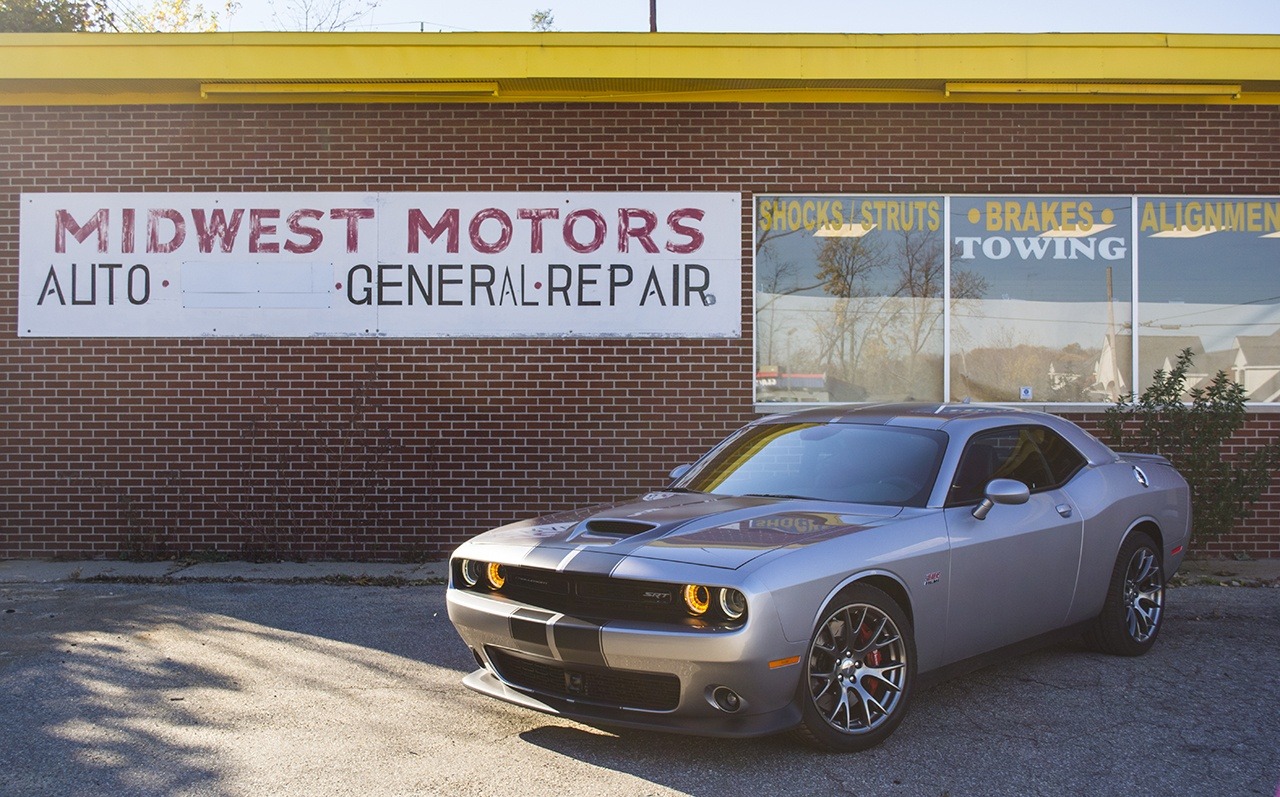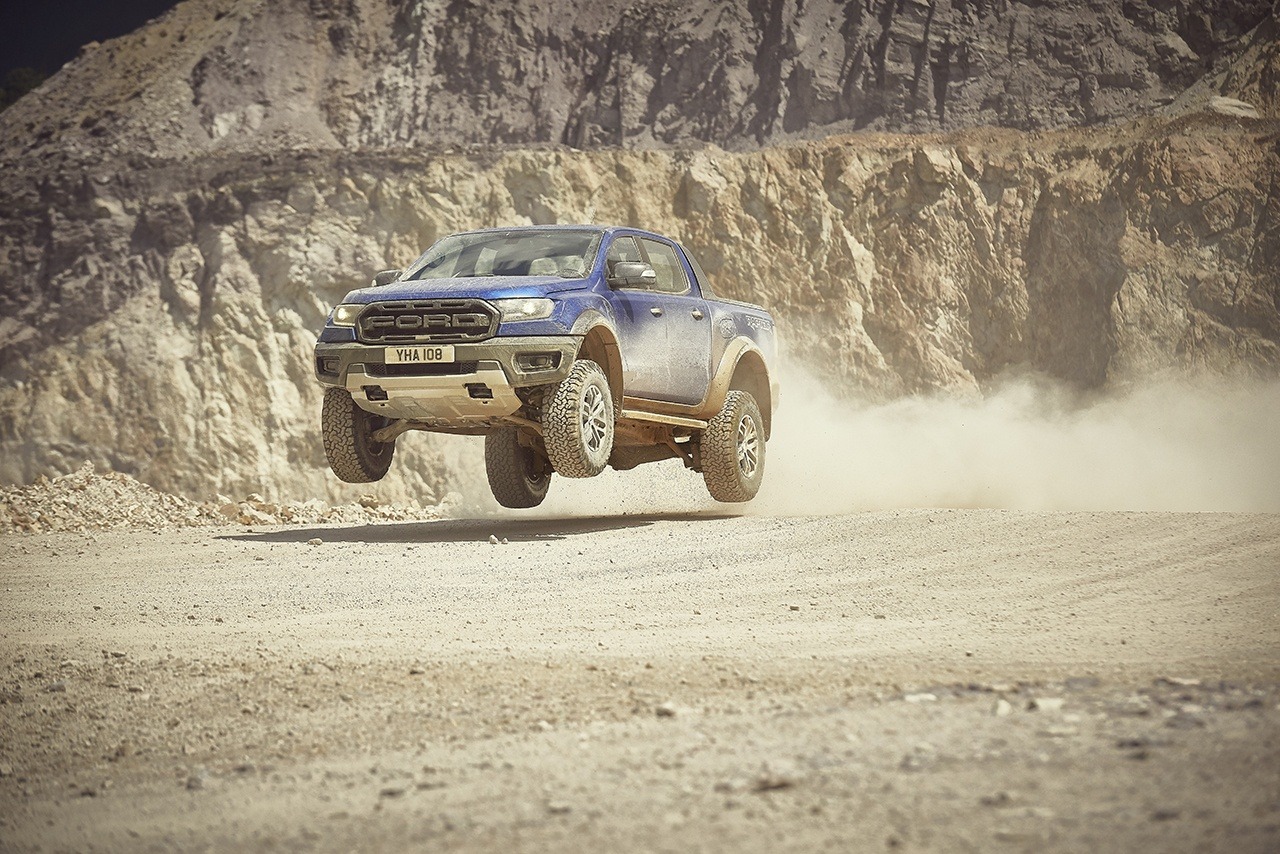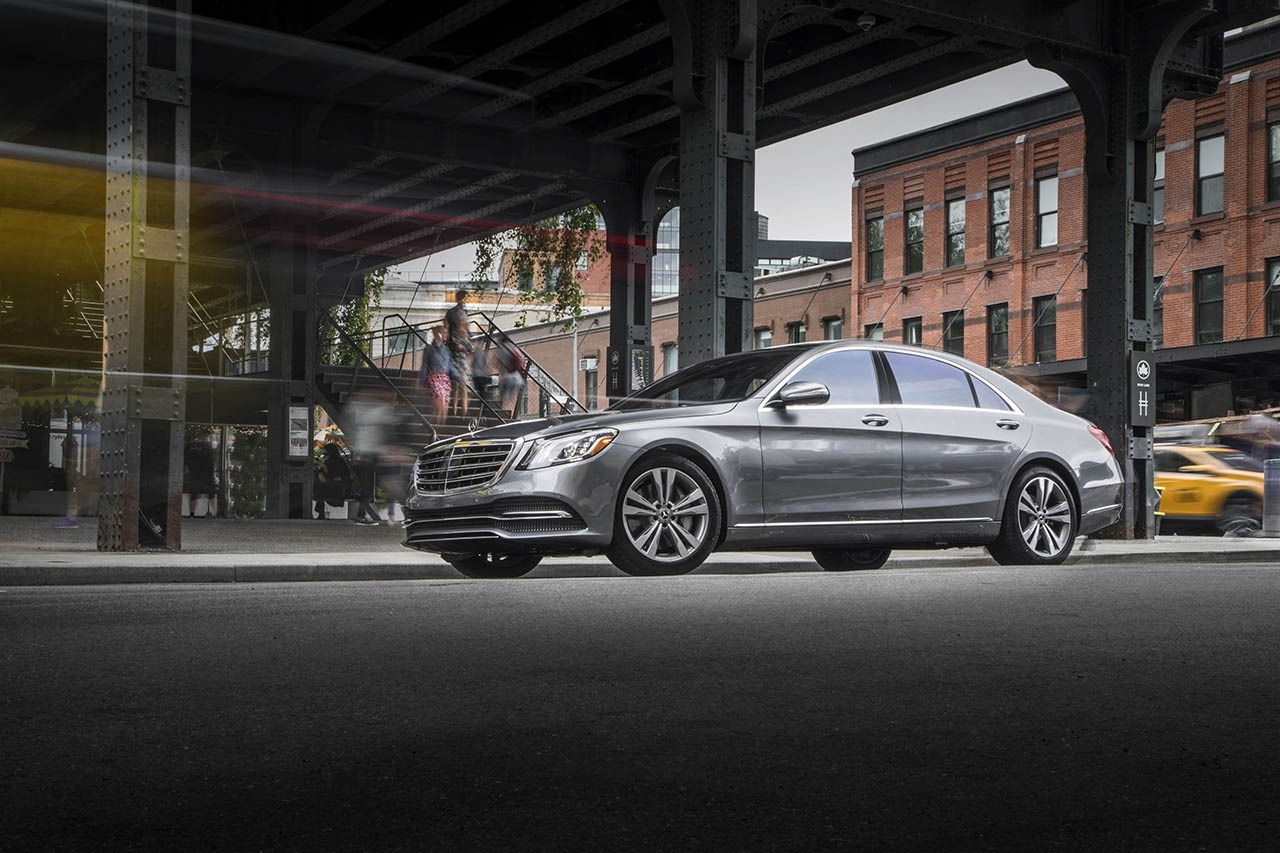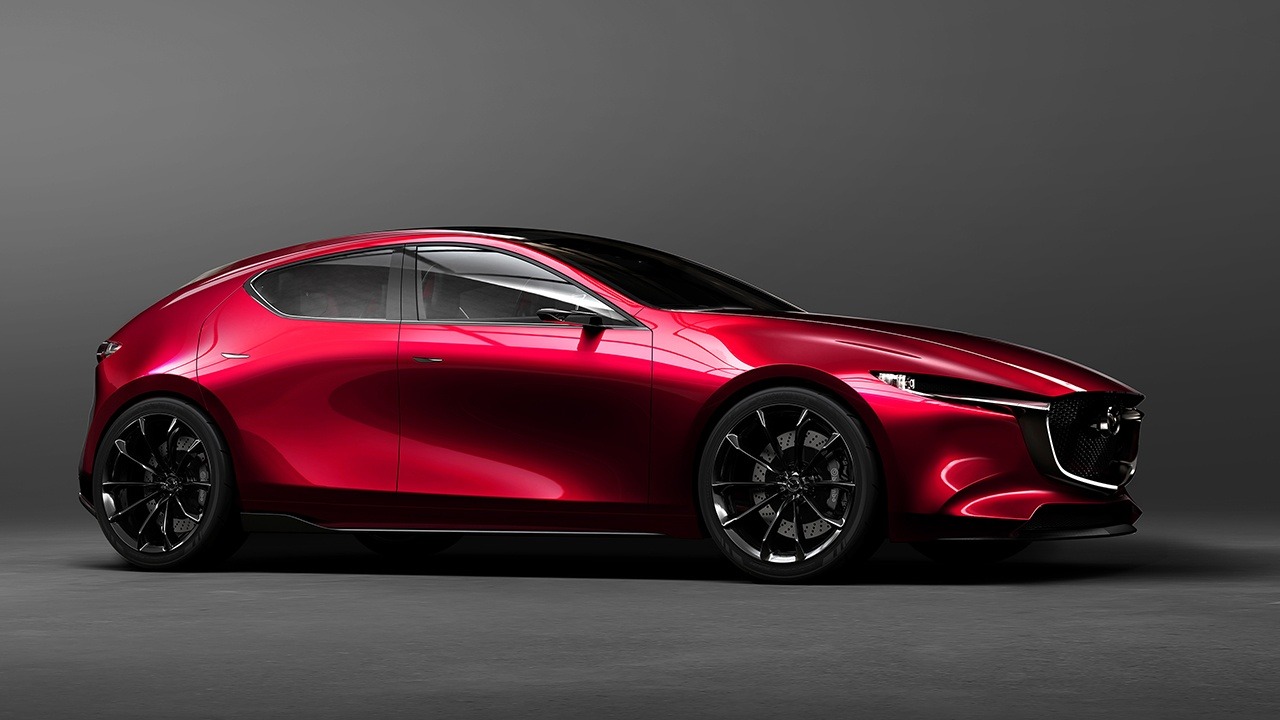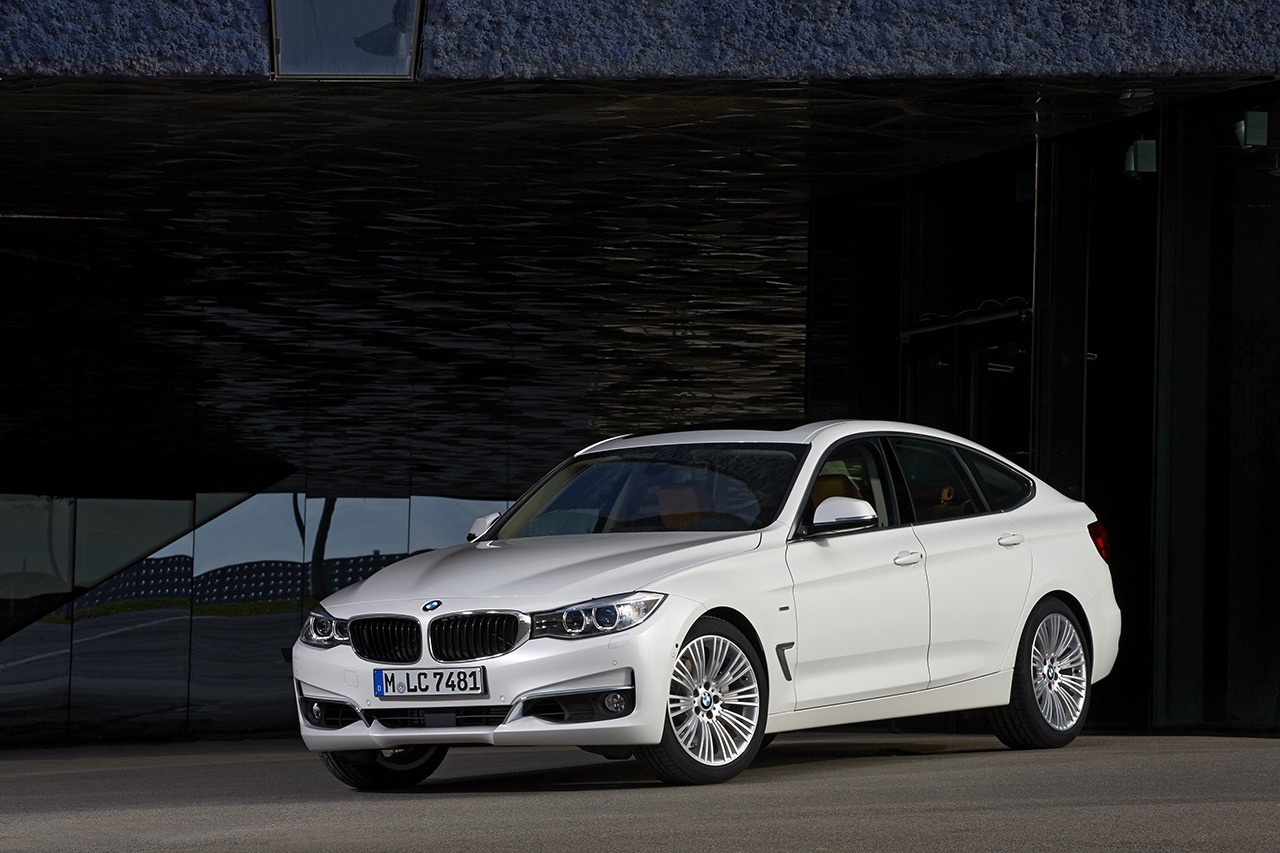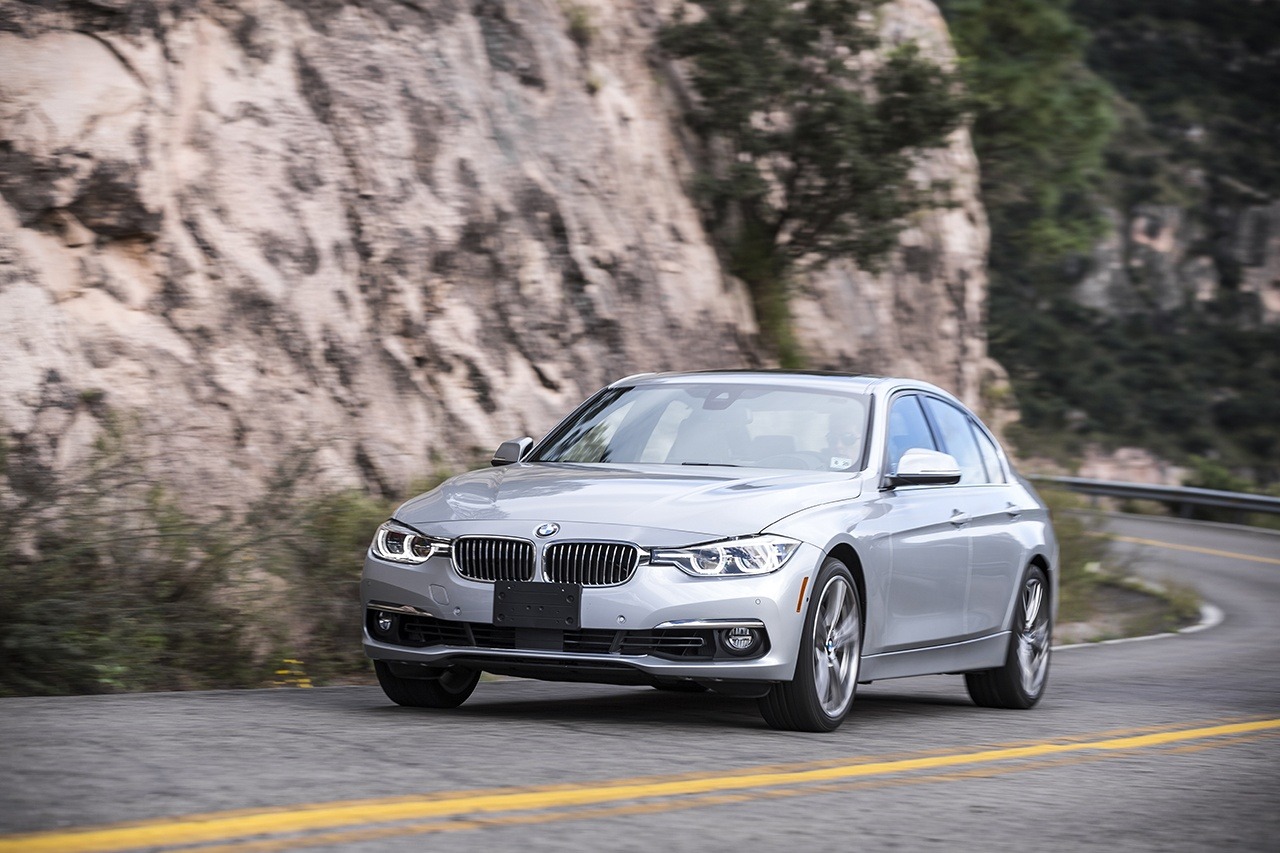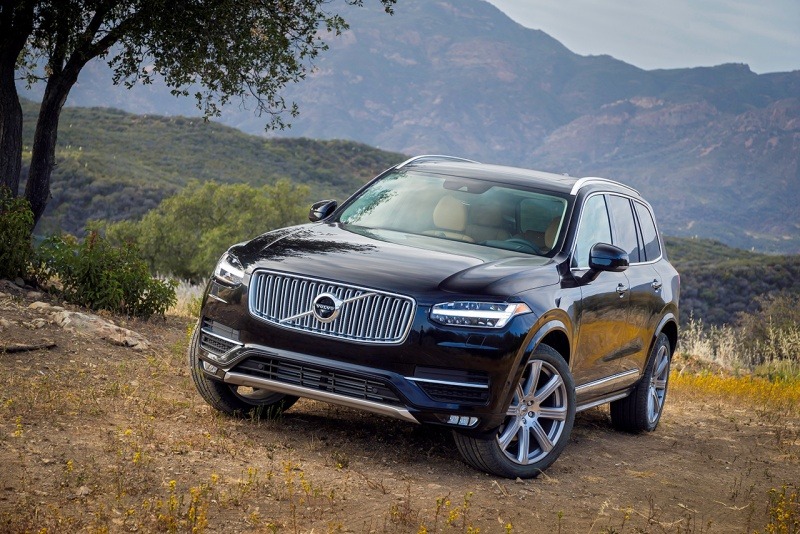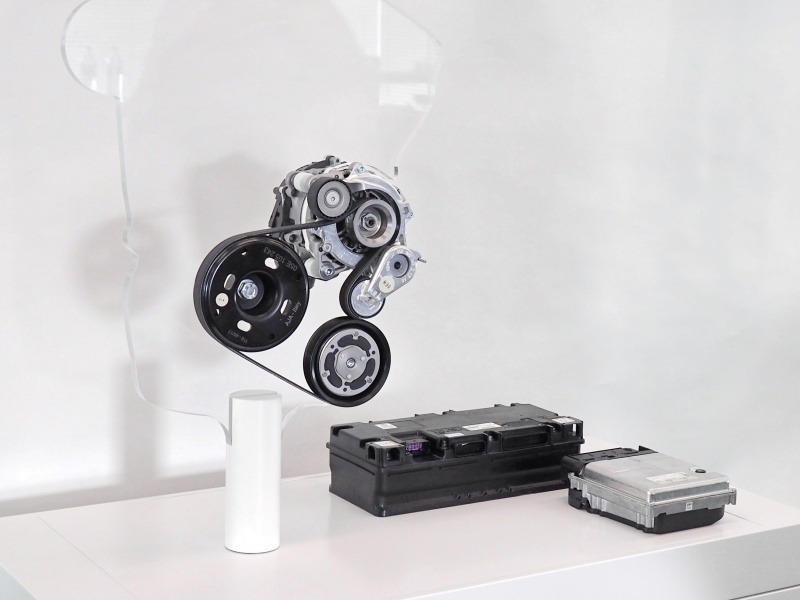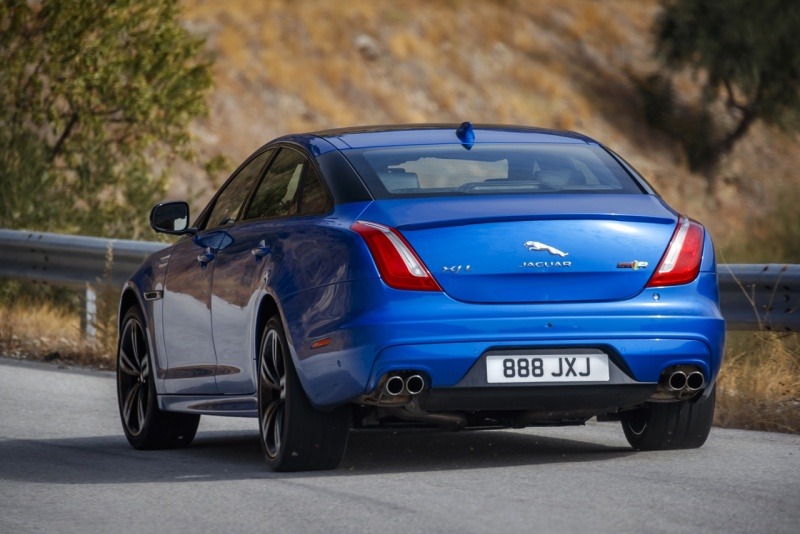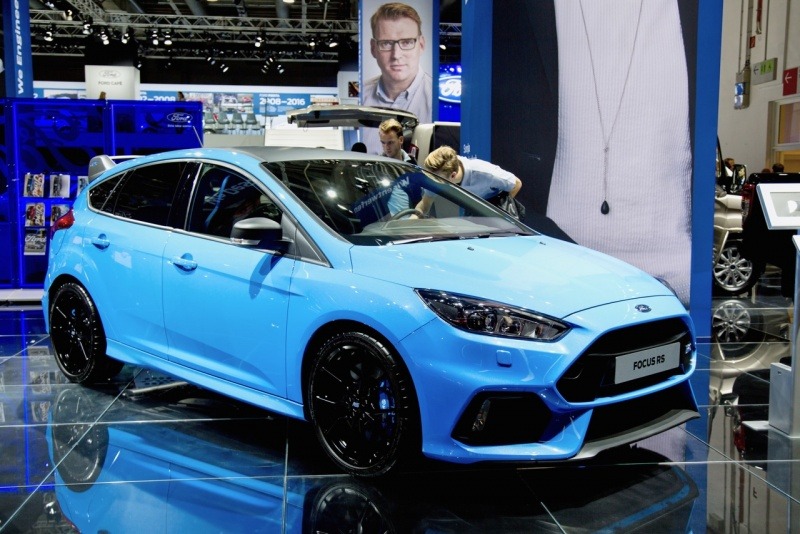Search the Community
Showing results for tags 'Next-Generation'.
-

Next-Generation Dodge Challenger To Embrace Electrification
William Maley posted an article in Dodge
The Dodge Challenger has been enjoying a resurgence for the past couple of years, due in part to the supercharged variants known as the Hellcat and Demon. But Fiat Chrysler CEO Mike Manley tells the Detroit News, the next-generation Challenger will be quite different. "The reality is those platforms and that technology we used does need to move on. They can’t exist as you get into the middle-2020s. New technology is going to drive a load of weight out, so we can think of the powertrains in a different way. And we can use electrification to really supplement those vehicles," said Manley. "I think that electrification will certainly be part of the formula that says what is American muscle in the future. What it isn’t going to be is a V-8, supercharged, 700-horsepower engine." It is unclear what is in store for the next-generation Challenger. We previously reported that the model would move to the Giorgio platform - what underpins the Alfa Romeo Giulia and Stelvio. But last year, a story came out that next-generation Challenger and Charger would use a heavily re-worked version of the current LX platform - one that can trace its roots back to Mercedes-Benz models from the 1990s. As for possible engines, we wouldn't be surprised if the 2.0L turbo-four found in the Jeep Wrangler becomes available in the next-generation Challenger. There is also the rumor of a new inline-six taking the place of the current Pentastar V6, which we would assume could get some form of electrification. But Kelly Blue Book analyst Karl Brauer is skeptical about muscle cars and electrification co-existing. "There's a long-standing rule about what constitutes American muscle, but electrification is not part of it. I need something that gets my blood pumping," said Brauer. "The Challenger is now challenging the Mustang for sales primacy with a V-8. Who would have thought that? In terms of sales, the supercharged V-8s have worked well." We're guessing that FCA will be keeping some sort of V8 option, possibly one with some sort of electric boost. Source: The Detroit News- 71 comments
-
- 2
-

-
- dodge challenger
- electrification
-
(and 2 more)
Tagged with:
-
The Dodge Challenger has been enjoying a resurgence for the past couple of years, due in part to the supercharged variants known as the Hellcat and Demon. But Fiat Chrysler CEO Mike Manley tells the Detroit News, the next-generation Challenger will be quite different. "The reality is those platforms and that technology we used does need to move on. They can’t exist as you get into the middle-2020s. New technology is going to drive a load of weight out, so we can think of the powertrains in a different way. And we can use electrification to really supplement those vehicles," said Manley. "I think that electrification will certainly be part of the formula that says what is American muscle in the future. What it isn’t going to be is a V-8, supercharged, 700-horsepower engine." It is unclear what is in store for the next-generation Challenger. We previously reported that the model would move to the Giorgio platform - what underpins the Alfa Romeo Giulia and Stelvio. But last year, a story came out that next-generation Challenger and Charger would use a heavily re-worked version of the current LX platform - one that can trace its roots back to Mercedes-Benz models from the 1990s. As for possible engines, we wouldn't be surprised if the 2.0L turbo-four found in the Jeep Wrangler becomes available in the next-generation Challenger. There is also the rumor of a new inline-six taking the place of the current Pentastar V6, which we would assume could get some form of electrification. But Kelly Blue Book analyst Karl Brauer is skeptical about muscle cars and electrification co-existing. "There's a long-standing rule about what constitutes American muscle, but electrification is not part of it. I need something that gets my blood pumping," said Brauer. "The Challenger is now challenging the Mustang for sales primacy with a V-8. Who would have thought that? In terms of sales, the supercharged V-8s have worked well." We're guessing that FCA will be keeping some sort of V8 option, possibly one with some sort of electric boost. Source: The Detroit News View full article
- 71 replies
-
- dodge challenger
- electrification
-
(and 2 more)
Tagged with:
-
Next year will see Volkswagen unveil the next-generation Golf GTI. It was reported that the model would utilize a mild-hybrid setup to boost fuel economy and improve low-end response. This decision was made under the leadership of former Volkswagen chairman Matthias Müller and would have become the flagship model for a new range of mild-hybrid models badged as IQ. But a new report from Autocar says the new chairman, Herbert Diess has canned the powertrain. No reason was given as to why this decision was reversed. Volkswagen is still planning to do mild-hybrid versions of the standard Golf that will utilize a 48-Volt electrical system. Autocar says the next-generation GTI will use an updated version of the turbocharged 2.0L four-cylinder producing either 252 or 286 horsepower. The current model in the U.S. punches out 227 horsepower. A six-speed manual or seven-speed dual-clutch will be the available transmissions. Source: Autocar View full article
- 7 replies
-
- 1
-

-
- golf gti
- mild-hybrid
-
(and 5 more)
Tagged with:
-
Next year will see Volkswagen unveil the next-generation Golf GTI. It was reported that the model would utilize a mild-hybrid setup to boost fuel economy and improve low-end response. This decision was made under the leadership of former Volkswagen chairman Matthias Müller and would have become the flagship model for a new range of mild-hybrid models badged as IQ. But a new report from Autocar says the new chairman, Herbert Diess has canned the powertrain. No reason was given as to why this decision was reversed. Volkswagen is still planning to do mild-hybrid versions of the standard Golf that will utilize a 48-Volt electrical system. Autocar says the next-generation GTI will use an updated version of the turbocharged 2.0L four-cylinder producing either 252 or 286 horsepower. The current model in the U.S. punches out 227 horsepower. A six-speed manual or seven-speed dual-clutch will be the available transmissions. Source: Autocar
- 7 comments
-
- 2
-

-
- golf gti
- mild-hybrid
-
(and 5 more)
Tagged with:
-

Rumorpile: North America Will Get the Next-Generation Ranger Raptor
William Maley posted an article in Ford
There was a number of people who were disappointed at the news that Ford wouldn't be bringing over the Ranger Raptor to the U.S. When you take into consideration that the current-generation model has been sold around the world since 2011, Ford decided it was too late in the lifecycle of the model to design a Raptor variant to meet various regulations. But there is the chance of the next-generation Ranger Raptor coming to the U.S. Road & Track has done some sleuthing into social media profiles for various Ford engineers and has uncovered some interesting information. The current Ranger has an internal project code of P375 and is expected to stick around for a few more years. The next-generation model, due in 2022, uses the code of P703. It is expected that the next-generation Ranger will be sharing a number of parts with the Bronco. How does the Raptor fit into this picture? In a recently posted project description, it mentions a chassis engineer has been working on a Ranger Raptor with the P703 code being built with North America in mind. The engineer has also worked on the current version of the Ranger (known as P375N) and the Ranger Raptor. Doing some more digging and speaking to some sources at Ford, the new Ranger Raptor is likely to be called “Project Redback” internally. Project Redback was the project name for the current Ranger Raptor. Road & Track doesn't have any information the powertrain, but speculates that North America would likely get a gas engine. Other markets get a diesel engine for the Raptor. Source: Road & Track-
- ford
- next-generation
-
(and 4 more)
Tagged with:
-
There was a number of people who were disappointed at the news that Ford wouldn't be bringing over the Ranger Raptor to the U.S. When you take into consideration that the current-generation model has been sold around the world since 2011, Ford decided it was too late in the lifecycle of the model to design a Raptor variant to meet various regulations. But there is the chance of the next-generation Ranger Raptor coming to the U.S. Road & Track has done some sleuthing into social media profiles for various Ford engineers and has uncovered some interesting information. The current Ranger has an internal project code of P375 and is expected to stick around for a few more years. The next-generation model, due in 2022, uses the code of P703. It is expected that the next-generation Ranger will be sharing a number of parts with the Bronco. How does the Raptor fit into this picture? In a recently posted project description, it mentions a chassis engineer has been working on a Ranger Raptor with the P703 code being built with North America in mind. The engineer has also worked on the current version of the Ranger (known as P375N) and the Ranger Raptor. Doing some more digging and speaking to some sources at Ford, the new Ranger Raptor is likely to be called “Project Redback” internally. Project Redback was the project name for the current Ranger Raptor. Road & Track doesn't have any information the powertrain, but speculates that North America would likely get a gas engine. Other markets get a diesel engine for the Raptor. Source: Road & Track View full article
-
- ford
- next-generation
-
(and 4 more)
Tagged with:
-
The next-generation Mercedes-Benz S-Class is expected to arrive very soon, with sales beginning sometime next year for Europe. But we don't know much about it, until now. Autocar recently published a report proving some interesting details about the next S-Class. The big news is that Mercedes will only be offering electrified powertrains for the S, including mild (using an electric motor mounted in the gearbox) and plug-in versions. Engines are said to be variants of Mercedes' new inline-six in gas and diesel flavors, and the AMG-developed 4.0L V8. For the design, recent spy photos reveal that Mercedes will be implementing a new grille, tri-band LED multibeam headlights, and door handles that retract into the bodywork to improve overall aero. One change that may surprise buyers in Europe is Mercedes' decision to drop the standard wheelbase model and only offer the long-wheelbase variant. According to Autocar, the reason is due to the new E-Class coming close in size to the standard-wheelbase S-Class (193.7-inches for the E-Class vs. 201.7-inches for the S-Class). Source: Autocar View full article
- 19 replies
-
- 1
-

-
- mercedes-benz
- next-generation
-
(and 3 more)
Tagged with:
-

Rumorpile: Next-Generation S-Class To Become Electrified
William Maley posted an article in Mercedes Benz
The next-generation Mercedes-Benz S-Class is expected to arrive very soon, with sales beginning sometime next year for Europe. But we don't know much about it, until now. Autocar recently published a report proving some interesting details about the next S-Class. The big news is that Mercedes will only be offering electrified powertrains for the S, including mild (using an electric motor mounted in the gearbox) and plug-in versions. Engines are said to be variants of Mercedes' new inline-six in gas and diesel flavors, and the AMG-developed 4.0L V8. For the design, recent spy photos reveal that Mercedes will be implementing a new grille, tri-band LED multibeam headlights, and door handles that retract into the bodywork to improve overall aero. One change that may surprise buyers in Europe is Mercedes' decision to drop the standard wheelbase model and only offer the long-wheelbase variant. According to Autocar, the reason is due to the new E-Class coming close in size to the standard-wheelbase S-Class (193.7-inches for the E-Class vs. 201.7-inches for the S-Class). Source: Autocar- 19 comments
-
- mercedes-benz
- next-generation
-
(and 3 more)
Tagged with:
-

Mazda Drops A Teaser For Next 3, Expected to Debut Next Month
William Maley posted an article in Mazda
"A New Era Begins November 2018" is the title of video that Mazda has uploaded to their YouTube channel. The sixteen-second video provides brief glimpses of two vehicles. One is a close up of the rear with a sharply raked c-pillar, while the other is a side profile shot. A number of people believe this is our first glimpse of the next-generation Mazda3 - mostly due to elements of the Kai Concept showing up. That title also hints at a big change coming with the next-generation 3. The Skyactiv-X powertrain with homogeneous charge compression ignition (HCCI) will be available. HCCI allows a gas engine to use compression to ignite the fuel. This allows for better efficiency and more power. We're expecting Mazda to show off the new 3 at the LA Auto Show next month. Stay tuned. Source: Mazda -
"A New Era Begins November 2018" is the title of video that Mazda has uploaded to their YouTube channel. The sixteen-second video provides brief glimpses of two vehicles. One is a close up of the rear with a sharply raked c-pillar, while the other is a side profile shot. A number of people believe this is our first glimpse of the next-generation Mazda3 - mostly due to elements of the Kai Concept showing up. That title also hints at a big change coming with the next-generation 3. The Skyactiv-X powertrain with homogeneous charge compression ignition (HCCI) will be available. HCCI allows a gas engine to use compression to ignite the fuel. This allows for better efficiency and more power. We're expecting Mazda to show off the new 3 at the LA Auto Show next month. Stay tuned. Source: Mazda View full article
-
The past decade has seen BMW exploring new niches in the marketplace with such models as the X6 and 5-Series GT. Some of them had paid off, while others haven't. The 3-Series GT falls into the latter. Following in the footsteps of the 5-Series GT (now 6-Series GT), the 3-Series offered a higher seating position and extra space for those who didn't want and SUV. But it never found an audience and BMW has decided to kill it off. “When we did the GT we saw that in demographic change people want to sit a little more upright. But then you saw X1 and X3 you can sit upright and you feel younger. So this segment is under pressure from SUVs, which are having no disadvantage in fuel consumption or in ride and handling,” said Klaus Fröhlich, BMW's r&d chief to Motoring. Last May, we reported that the next 3-Series GT would have moved over to the 4-Series lineup - similar to what BMW did to the 5-Series GT. But it seems those plans are off the table. Its unclear at the moment when BMW could end production of the 3-Series GT. Source: Motoring
- 6 comments
-
- 3-series gt
- bmw
-
(and 3 more)
Tagged with:
-
The past decade has seen BMW exploring new niches in the marketplace with such models as the X6 and 5-Series GT. Some of them had paid off, while others haven't. The 3-Series GT falls into the latter. Following in the footsteps of the 5-Series GT (now 6-Series GT), the 3-Series offered a higher seating position and extra space for those who didn't want and SUV. But it never found an audience and BMW has decided to kill it off. “When we did the GT we saw that in demographic change people want to sit a little more upright. But then you saw X1 and X3 you can sit upright and you feel younger. So this segment is under pressure from SUVs, which are having no disadvantage in fuel consumption or in ride and handling,” said Klaus Fröhlich, BMW's r&d chief to Motoring. Last May, we reported that the next 3-Series GT would have moved over to the 4-Series lineup - similar to what BMW did to the 5-Series GT. But it seems those plans are off the table. Its unclear at the moment when BMW could end production of the 3-Series GT. Source: Motoring View full article
- 6 replies
-
- 3-series gt
- bmw
-
(and 3 more)
Tagged with:
-
There have been some rumors floating around for the past couple of years that BMW was planning to offer a 3-Series with a fully electric powertrain. Some new spy shots reveal that may come to fruition. At first glance, this looks like a normal 3-Series sedan. But on the front doors, there is a label that reads "Electric Test Vehicle". BMW has also tried to disguise the fact this is an electric by attaching tailpipes, but the spy photographer says its a pure EV. Not much is known about the electric powertrain or batteries. This mule was seen testing with a Tesla Model 3, suggesting that BMW sees it a direct competitor to the 3-Series EV. To do that, the model would need a range of over 200 miles. But sources at BMW tell Motor Trend that the range could be as close to 300 miles. We do know the next 3-Series will transition the CLAR platform that uses a combination of steel, aluminum, and carbon fiber. It also looks like that the design will not change that much from the current model. The next 3-Series is expected to debut at the Paris Motor Show in October. Whether we see the EV version is unclear. Source: Motor Trend
- 19 comments
-
There have been some rumors floating around for the past couple of years that BMW was planning to offer a 3-Series with a fully electric powertrain. Some new spy shots reveal that may come to fruition. At first glance, this looks like a normal 3-Series sedan. But on the front doors, there is a label that reads "Electric Test Vehicle". BMW has also tried to disguise the fact this is an electric by attaching tailpipes, but the spy photographer says its a pure EV. Not much is known about the electric powertrain or batteries. This mule was seen testing with a Tesla Model 3, suggesting that BMW sees it a direct competitor to the 3-Series EV. To do that, the model would need a range of over 200 miles. But sources at BMW tell Motor Trend that the range could be as close to 300 miles. We do know the next 3-Series will transition the CLAR platform that uses a combination of steel, aluminum, and carbon fiber. It also looks like that the design will not change that much from the current model. The next 3-Series is expected to debut at the Paris Motor Show in October. Whether we see the EV version is unclear. Source: Motor Trend View full article
- 19 replies
-
The next-generation Volvo XC90, due out in 2021 as a 2022 model will follow in the S60's footsteps by not offering any sort of diesel option. Instead, Volvo will be offering a range of hybrids and electric-only powertrains. “We have to prioritise – we cannot do everything. So if we want to be faster in electrification we can’t say yes to everything. That’s why [the S60] has no diesel alternative and we are not planning to have a diesel alternative in any new cars. The XC90 will follow this,” said Volvo CEO Håkan Samuelsson to Auto Express. Volvo's next-generation SPA2 platform will underpin the XC90, which is designed to accept both electric and hybrid powertrains. Don't expect a major change in terms of the design. Auto Express reports that Volvo will undertake an evolutionary approach. Source: Auto Express View full article
- 6 replies
-
- next-generation
- rumor
-
(and 3 more)
Tagged with:
-
The next-generation Volvo XC90, due out in 2021 as a 2022 model will follow in the S60's footsteps by not offering any sort of diesel option. Instead, Volvo will be offering a range of hybrids and electric-only powertrains. “We have to prioritise – we cannot do everything. So if we want to be faster in electrification we can’t say yes to everything. That’s why [the S60] has no diesel alternative and we are not planning to have a diesel alternative in any new cars. The XC90 will follow this,” said Volvo CEO Håkan Samuelsson to Auto Express. Volvo's next-generation SPA2 platform will underpin the XC90, which is designed to accept both electric and hybrid powertrains. Don't expect a major change in terms of the design. Auto Express reports that Volvo will undertake an evolutionary approach. Source: Auto Express
- 6 comments
-
- next-generation
- rumor
-
(and 3 more)
Tagged with:
-
The flagship luxury SUV class is becoming more crowded with the Audi Q8, Bentley Bentayga, and Rolls-Royce Cullinan entering the fray. Land Rover is feeling the pressure and has big plans for the next-generation Range Rover to fight them off. Expected to launch in 2021, the fifth-generation Range Rover will move from the D7u platform to the new Modular Longitudinal Architecture (MLA). It will be lighter than D7u thanks to the extensive use of aluminum. MLA will also allow Land Rover to install fully-electric powertrains into the model, alongside gas, diesel, and plug-in hybrid variants. But don't expect one at launch as Land Rover reportedly has plans for stand-alone electric model that will have more car-like qualities - Road Rover anyone? A Range Rover EV will launch sometime after the launch, primarily for Asian markets like China. The current engine lineup, primarily sourced from other automakers will be scrapped. V6 engines will be replaced by inline-six engines from Jaguar Land Rover's Ingenium family. Its unclear whether or not there will be replacements for the V8 engines. Certain engines will come paired with a 48V mild-hybrid system. Don't expect any dramatic changes to the Range Rover's exterior as there are plans to do an evolution of the current shape. The interior will get new technologies such as an updated version of JLR's Touch Pro Duo infotainment system and connected car technology that will allow you to perform various tasks such as locking/unlocking your front door at home. There is also talk of some talk of autonomous driving features making an appearance. Source: Autocar View full article
- 4 replies
-
- next-generation
- range rover
-
(and 2 more)
Tagged with:
-
The flagship luxury SUV class is becoming more crowded with the Audi Q8, Bentley Bentayga, and Rolls-Royce Cullinan entering the fray. Land Rover is feeling the pressure and has big plans for the next-generation Range Rover to fight them off. Expected to launch in 2021, the fifth-generation Range Rover will move from the D7u platform to the new Modular Longitudinal Architecture (MLA). It will be lighter than D7u thanks to the extensive use of aluminum. MLA will also allow Land Rover to install fully-electric powertrains into the model, alongside gas, diesel, and plug-in hybrid variants. But don't expect one at launch as Land Rover reportedly has plans for stand-alone electric model that will have more car-like qualities - Road Rover anyone? A Range Rover EV will launch sometime after the launch, primarily for Asian markets like China. The current engine lineup, primarily sourced from other automakers will be scrapped. V6 engines will be replaced by inline-six engines from Jaguar Land Rover's Ingenium family. Its unclear whether or not there will be replacements for the V8 engines. Certain engines will come paired with a 48V mild-hybrid system. Don't expect any dramatic changes to the Range Rover's exterior as there are plans to do an evolution of the current shape. The interior will get new technologies such as an updated version of JLR's Touch Pro Duo infotainment system and connected car technology that will allow you to perform various tasks such as locking/unlocking your front door at home. There is also talk of some talk of autonomous driving features making an appearance. Source: Autocar
- 4 comments
-
- next-generation
- range rover
-
(and 2 more)
Tagged with:
-

Next Dodge Challenger and Charger To Solider On With Current Platform
William Maley posted an article in Dodge
Let us wind the clock back to November 2016. We wrote a piece in the rumorpile saying that the next-generation Dodge Challenger and Charger had been pushed back to 2021. It was unclear as to why the models were being pushed back, but there was the interesting tidbit that they would be using the new Giorgio platform - what underpins the Alfa Romeo Giulia and Stelvio. But there may be a chance that the next-generation models could use a heavily upgraded version of the current platform which can trace its roots back to the 1990s from Mercedes-Benz. "We may not necessarily have to go as far as the Giorgio architecture for Dodge as long as we are willing to commit to a significant upgrade to the current architecture to make it competitive. That's something that's already started," said FCA Sergio Marchionne during last Friday's five-year presentation. "Certainly by the time we finish with that architecture, you will not recognize its origins. We may maintain its bare-bones structure." Obvious question: Why not Giorgio? "The problem with Giorgio is from size and capability standpoint it reflects much more of a European performance requirement than it does the American heritage of Dodge," said Marchionne. We read this one of two ways. Either the current incarnation of Giorgio cannot fit a HEMI V8 or is unable to handle the power output of high-performance versions like the Hellcat. As for the Chrysler 300, Marchionne hinted that it might not make a return. Source: Motor Authority- 61 comments
-
- challenger
- charger
-
(and 3 more)
Tagged with:
-
Let us wind the clock back to November 2016. We wrote a piece in the rumorpile saying that the next-generation Dodge Challenger and Charger had been pushed back to 2021. It was unclear as to why the models were being pushed back, but there was the interesting tidbit that they would be using the new Giorgio platform - what underpins the Alfa Romeo Giulia and Stelvio. But there may be a chance that the next-generation models could use a heavily upgraded version of the current platform which can trace its roots back to the 1990s from Mercedes-Benz. "We may not necessarily have to go as far as the Giorgio architecture for Dodge as long as we are willing to commit to a significant upgrade to the current architecture to make it competitive. That's something that's already started," said FCA Sergio Marchionne during last Friday's five-year presentation. "Certainly by the time we finish with that architecture, you will not recognize its origins. We may maintain its bare-bones structure." Obvious question: Why not Giorgio? "The problem with Giorgio is from size and capability standpoint it reflects much more of a European performance requirement than it does the American heritage of Dodge," said Marchionne. We read this one of two ways. Either the current incarnation of Giorgio cannot fit a HEMI V8 or is unable to handle the power output of high-performance versions like the Hellcat. As for the Chrysler 300, Marchionne hinted that it might not make a return. Source: Motor Authority View full article
- 61 replies
-
- challenger
- charger
-
(and 3 more)
Tagged with:
-
Volkswagen has made their plans clear of introducing a number of full electric vehicles beginning with the I.D. next year. But the company is also planning to electrify a number of models beginning with the next-generation Golf. This week at the International Vienna Motor Symposium, Volkswagen unveiled a 48-volt mild hybrid system currently under development for the Mk. 8 Golf. The system is comprised of a 48-volt belt-integrated starter generator and a 48-volt battery. This will allow for an enhanced stop-start system, brake regeneration, and engine-off coasting. Volkswagen made specific mention of the last feature as it would save 0.3 liters of gas over 100 kilometers - not a lot, but every little bit helps. “Electrifying conventional drives will enable us to further reduce consumption and emissions while also increasing dynamics and convenience. We are starting this extensive electrification campaign with Volkswagen’s best-selling vehicle to date – the Golf. Our newly developed, cost-effective 48-V mild hybrid will pave the way for introducing this type of technology to the mainstream,” said Volkswagen's Member of the Board of Management for VW Passenger Cars, Dr. Frank Welsch. It is expected that Volkswagen will reveal the Mk.8 Golf sometime next year. Source: Volkswagen Volkswagen to offer electrified versions of its models Extensive hybrid programme for the next Golf is the starting point for the comprehensive electrification of conventional drives New 48-V mild hybrid is the first step into the world of efficient electrified models 48-V starter generator is a versatile all-rounder Volkswagen is to launch an electric version of its globally best-selling vehicle – the Volkswagen Golf, offering a sustainable, efficient and powerful alternative. The introduction of innovative, new hybrid systems in the eighth generation of Golf vehicles marks a new era for the brand with regard to drive technology. In the future, Volkswagen will gradually electrify almost every vehicle in its range of models. The company is offering a first look at the future of electrified drive systems as part of the International Vienna Motor Symposium – one of the world’s most important congresses on the automotive technology of today and the future. “Electrifying conventional drives will enable us to further reduce consumption and emissions while also increasing dynamics and convenience”, says Dr Frank Welsch, Member of the Board of Management for Volkswagen Passenger Cars with responsibility for Technical Development. Welsch continues: “We are starting this extensive electrification campaign with Volkswagen’s best-selling vehicle to date – the Golf. Our newly developed, cost-effective 48-V mild hybrid will pave the way for introducing this type of technology to the mainstream”. Volkswagen will combine the combustion engine with a 48-V belt-integrated starter generator and a 48-V battery. This sustainable combination represents the gateway to the future of Volkswagen hybrid models. The 48-V mild hybrid makes it possible to “coast” with the combustion engine completely switched off, thereby saving up to 0.3 litres of fuel over 100 kilometres. Moreover, this mild-hybrid solution offers much improved dynamics and convenience as a result of providing an electric boost upon start-up. The science behind 48-V technology 48-V technology represents a new chapter in engine design, enabling drives to be electrified in a cost-efficient manner. The 48-V system will be used in vehicles in addition to the well-known 12-V system. In the case of very small wire cross-sections and a lightweight wiring harness, the 48-V system enables a considerably higher amount of energy to be saved than the 12-V system, e.g. via recuperation when the vehicle brakes. This high level of voltage enables a number of operations, including the actuation of the 48-V belt-integrated starter generator. The starter-generator is a true all-rounder. On the one hand, the generator performs the role of alternator and starter. At the same time, it functions as a small, lightweight electric motor that immediately increases drive torque upon start-up by means of an electric boost. The power of the generator is transferred via a belt. The generator also starts the combustion engine – which is switched off as much as possible while the vehicle is moving – in a barely perceptible way. Another versatile element is the 48-V lithium-ion battery. The battery is supplied with energy during a number of operations, including recuperation – i.e. when the vehicle slows down. The starter generator receives the necessary voltage via the battery and the 12-V power supply receives the required voltage via the “DC/DC converter”. Welsch continues: “The basic interaction of different energy sources – electricity, petrol, diesel and natural gas – represents a paradigm shift at Volkswagen. For the first time, the company will simultaneously offer product lines such as the Golf with conventional, electrically assisted drives as well as product lines such as the I.D. with purely electrical drives in the future”. This will result in the product lines diverging into two branches which are nevertheless equal. This new product strategy will come into play for the first time from 2019 onwards with the launch of the next generation of the Golf and the first I.D. – two compact Volkswagen vehicles with completely separate technical concepts as well as clearly different design make-ups. With these two product lines, Volkswagen is seizing the opportunity to democratise the electrification of vehicles. View full article
- 3 replies
-
- golf
- mild hybrid
-
(and 2 more)
Tagged with:
-

Volkswagen Will Add A Mild-Hybrid System to Next-Gen Golf
William Maley posted an article in Volkswagen
Volkswagen has made their plans clear of introducing a number of full electric vehicles beginning with the I.D. next year. But the company is also planning to electrify a number of models beginning with the next-generation Golf. This week at the International Vienna Motor Symposium, Volkswagen unveiled a 48-volt mild hybrid system currently under development for the Mk. 8 Golf. The system is comprised of a 48-volt belt-integrated starter generator and a 48-volt battery. This will allow for an enhanced stop-start system, brake regeneration, and engine-off coasting. Volkswagen made specific mention of the last feature as it would save 0.3 liters of gas over 100 kilometers - not a lot, but every little bit helps. “Electrifying conventional drives will enable us to further reduce consumption and emissions while also increasing dynamics and convenience. We are starting this extensive electrification campaign with Volkswagen’s best-selling vehicle to date – the Golf. Our newly developed, cost-effective 48-V mild hybrid will pave the way for introducing this type of technology to the mainstream,” said Volkswagen's Member of the Board of Management for VW Passenger Cars, Dr. Frank Welsch. It is expected that Volkswagen will reveal the Mk.8 Golf sometime next year. Source: Volkswagen Volkswagen to offer electrified versions of its models Extensive hybrid programme for the next Golf is the starting point for the comprehensive electrification of conventional drives New 48-V mild hybrid is the first step into the world of efficient electrified models 48-V starter generator is a versatile all-rounder Volkswagen is to launch an electric version of its globally best-selling vehicle – the Volkswagen Golf, offering a sustainable, efficient and powerful alternative. The introduction of innovative, new hybrid systems in the eighth generation of Golf vehicles marks a new era for the brand with regard to drive technology. In the future, Volkswagen will gradually electrify almost every vehicle in its range of models. The company is offering a first look at the future of electrified drive systems as part of the International Vienna Motor Symposium – one of the world’s most important congresses on the automotive technology of today and the future. “Electrifying conventional drives will enable us to further reduce consumption and emissions while also increasing dynamics and convenience”, says Dr Frank Welsch, Member of the Board of Management for Volkswagen Passenger Cars with responsibility for Technical Development. Welsch continues: “We are starting this extensive electrification campaign with Volkswagen’s best-selling vehicle to date – the Golf. Our newly developed, cost-effective 48-V mild hybrid will pave the way for introducing this type of technology to the mainstream”. Volkswagen will combine the combustion engine with a 48-V belt-integrated starter generator and a 48-V battery. This sustainable combination represents the gateway to the future of Volkswagen hybrid models. The 48-V mild hybrid makes it possible to “coast” with the combustion engine completely switched off, thereby saving up to 0.3 litres of fuel over 100 kilometres. Moreover, this mild-hybrid solution offers much improved dynamics and convenience as a result of providing an electric boost upon start-up. The science behind 48-V technology 48-V technology represents a new chapter in engine design, enabling drives to be electrified in a cost-efficient manner. The 48-V system will be used in vehicles in addition to the well-known 12-V system. In the case of very small wire cross-sections and a lightweight wiring harness, the 48-V system enables a considerably higher amount of energy to be saved than the 12-V system, e.g. via recuperation when the vehicle brakes. This high level of voltage enables a number of operations, including the actuation of the 48-V belt-integrated starter generator. The starter-generator is a true all-rounder. On the one hand, the generator performs the role of alternator and starter. At the same time, it functions as a small, lightweight electric motor that immediately increases drive torque upon start-up by means of an electric boost. The power of the generator is transferred via a belt. The generator also starts the combustion engine – which is switched off as much as possible while the vehicle is moving – in a barely perceptible way. Another versatile element is the 48-V lithium-ion battery. The battery is supplied with energy during a number of operations, including recuperation – i.e. when the vehicle slows down. The starter generator receives the necessary voltage via the battery and the 12-V power supply receives the required voltage via the “DC/DC converter”. Welsch continues: “The basic interaction of different energy sources – electricity, petrol, diesel and natural gas – represents a paradigm shift at Volkswagen. For the first time, the company will simultaneously offer product lines such as the Golf with conventional, electrically assisted drives as well as product lines such as the I.D. with purely electrical drives in the future”. This will result in the product lines diverging into two branches which are nevertheless equal. This new product strategy will come into play for the first time from 2019 onwards with the launch of the next generation of the Golf and the first I.D. – two compact Volkswagen vehicles with completely separate technical concepts as well as clearly different design make-ups. With these two product lines, Volkswagen is seizing the opportunity to democratise the electrification of vehicles.- 3 comments
-
- golf
- mild hybrid
-
(and 2 more)
Tagged with:
-

Jaguar's Head of Design Says Next XJ Will Be Larger, Sportier
William Maley posted an article in Jaguar
Back in December, Jaguar's head of Design, Ian Callum revealed that work had begun on the next-generation XJ. Not many details were given except that the new XJ would be "something quite special." This week at the Geneva Motor show, Callum let loose a few more details. A key complaint about the current XJ is a cramped interior. Callum said the new model would address this issue. “It’ll be different. And it will have more room inside it. One of the biggest criticisms XJ has had is that a lot of people think the room inside the car is not big enough. I don’t believe in segmentation like this — I don’t believe in an F Segment as such,” explained Callum. “I think we should just do a luxury vehicle that matches people well. That’s what we’ve done for XJ, which is what the first one was all about. A lot of our market is far-eastern and people are using these big cars to be driven in, so we must accommodate that better.” The next XJ will about the size of a Mercedes-Benz S-Class, but Callum said the XJ will be focused more as a driver’s car. “I never saw XJ as an S-Class competitor. Mercedes-Benz have created that place — the three-box limo sedan,” said Callum. “I just don’t think that’s a Jaguar. A Jaguar is a sportier entity and it should reflect that. Yes it will take four [people] to market in comfort and luxury, but that’s where the similarities stop. It will still be a driver’s car. I don’t think many Mercedes-Benz S-Classes are driver’s cars, with the exception of AMGs or something. If you drive an XJR575, it’s a driver’s car. It just happens to be able to take three people in comfort. I don’t buy this segmentation.” CarAdvice expects we'll see the next XJ at the end of this year. But as we reported previously, Callum said the new XJ wouldn't debut in 2018. We're expecting to see it sometime next year at the earliest. Source: CarAdvice -
Back in December, Jaguar's head of Design, Ian Callum revealed that work had begun on the next-generation XJ. Not many details were given except that the new XJ would be "something quite special." This week at the Geneva Motor show, Callum let loose a few more details. A key complaint about the current XJ is a cramped interior. Callum said the new model would address this issue. “It’ll be different. And it will have more room inside it. One of the biggest criticisms XJ has had is that a lot of people think the room inside the car is not big enough. I don’t believe in segmentation like this — I don’t believe in an F Segment as such,” explained Callum. “I think we should just do a luxury vehicle that matches people well. That’s what we’ve done for XJ, which is what the first one was all about. A lot of our market is far-eastern and people are using these big cars to be driven in, so we must accommodate that better.” The next XJ will about the size of a Mercedes-Benz S-Class, but Callum said the XJ will be focused more as a driver’s car. “I never saw XJ as an S-Class competitor. Mercedes-Benz have created that place — the three-box limo sedan,” said Callum. “I just don’t think that’s a Jaguar. A Jaguar is a sportier entity and it should reflect that. Yes it will take four [people] to market in comfort and luxury, but that’s where the similarities stop. It will still be a driver’s car. I don’t think many Mercedes-Benz S-Classes are driver’s cars, with the exception of AMGs or something. If you drive an XJR575, it’s a driver’s car. It just happens to be able to take three people in comfort. I don’t buy this segmentation.” CarAdvice expects we'll see the next XJ at the end of this year. But as we reported previously, Callum said the new XJ wouldn't debut in 2018. We're expecting to see it sometime next year at the earliest. Source: CarAdvice View full article
-
As Ford wraps up European production of the Focus RS next month, rumors are beginning to swirl about the next-generation. Dutch publication Auto International reports the next-generation Focus RS will be packing 400 horsepower via a 48-volt mild-hybrid system. The report alleges that the turbocharged 2.3L four-cylinder used in the current model will carry over, but will feature a larger starter motor for the hybrid system. Torque will rise to 394 pound-feet. A six-speed manual will be the standard transmission, but Auto International reports a dual-clutch transmission is in the cards for certain markets. There is some credence to this rumor as Ford is planning to electrify a number of models in the coming years, including the F-150 and Mustang. No time frame was given as to when the next Focus RS will debut, but considering the new Focus will debut next month, we're expecting it will be sometime after 2020. Source: Auto International


